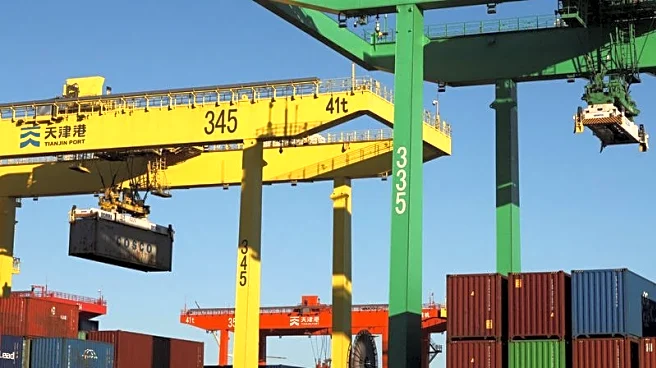What is the story about?
What's Happening?
The Organisation for Economic Cooperation and Development (OECD) has released its latest Economic Outlook Interim Report, indicating that the full impact of U.S. tariff hikes is still unfolding. Despite the tariff increases, U.S. economic growth is projected to slow to 1.8% in 2025, up from the previous forecast of 1.6%, before easing to 1.5% in 2026. The tariffs, which have raised the effective U.S. rate on merchandise imports to 19.5%, are expected to weigh on investment and trade growth. However, an AI investment boom, fiscal support, and interest rate cuts by the Federal Reserve are anticipated to mitigate these effects. The OECD also noted that firms have been absorbing the tariff shock through narrower margins and inventory buffers.
Why It's Important?
The ongoing tariff situation poses significant implications for U.S. economic stakeholders, including businesses and consumers. Higher tariffs can increase production costs, potentially leading to higher prices for goods and services. This could affect consumer spending and business investment, impacting overall economic growth. The OECD's forecast suggests that while growth is slowing, measures such as AI investments and fiscal support are providing some relief. The situation underscores the importance of strategic economic policies to navigate trade barriers and maintain economic stability.
What's Next?
As the effects of the tariffs continue to unfold, businesses may need to adjust their strategies to cope with increased costs. The Federal Reserve's potential interest rate cuts could provide further economic support, but prolonged policy uncertainty and additional trade barriers could hinder growth. Stakeholders will be closely monitoring these developments to assess their impact on investment and consumption patterns.
Beyond the Headlines
The tariff situation highlights broader geopolitical tensions and their impact on global trade dynamics. The U.S. tariffs are part of a larger trend of protectionist policies that could reshape international trade relationships. This may lead to shifts in supply chains and influence global economic growth patterns, requiring countries to adapt to new trade realities.
AI Generated Content
Do you find this article useful?














